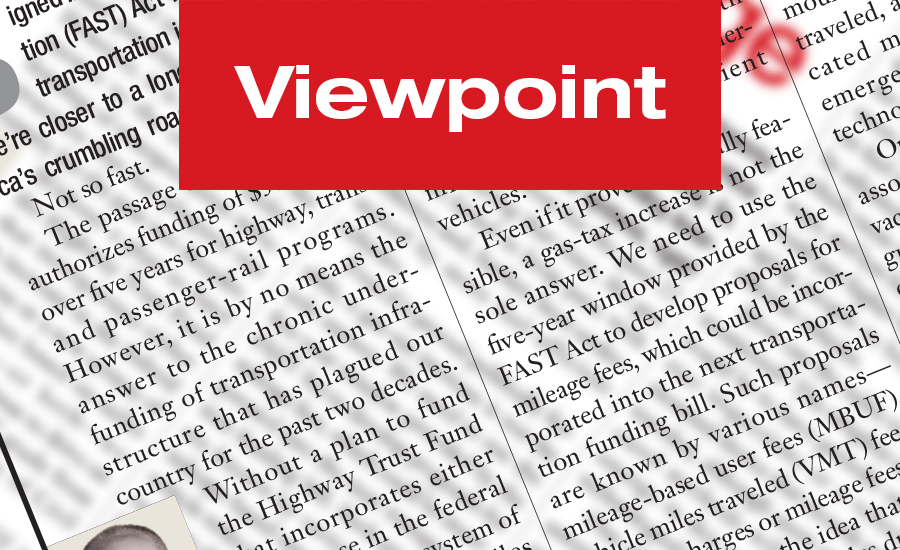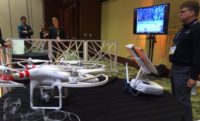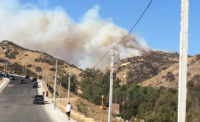More and more drones are flying around construction sites these days because builders and contractors are finding them useful and economical for a number of purposes.
A 2015 survey about drones in construction conducted by ConstructionPro Network found that 88 percent of surveyed contractors were aware of drones, and nearly 3-in-10 reported hands-on experience. All who had used a drone labeled it a success. The report concluded that 2016 promises to be the breakout year for unmanned aerial vehicles, or UAVs.
Builders and contractors are using drones with high-resolution cameras for a number of purposes including tracking job progress, inspection of hard-to-access areas and monitoring safety compliance.
Still, the use of drones for business is a relatively new concept and anyone contemplating operating a drone for construction needs to not only learn the rules of the sky but ask themselves some business questions before opting to buy a drone as a mainstream tool.
Thankfully, the rules-of-the-sky issue is clearing up, thanks to a new set of operating rules from the Federal Aviation Administration that went into effect Aug. 29.
Key restrictions to consider under the basic rules include that a drone must weigh less than 55 pounds, it must fly no more than 400 feet above ground level or, if flying higher, stay within 400 feet of the structure being surveyed.
A drone also must be flown only during daylight hours and no faster than 100 mph. It may not be flown over non-participating people and must yield to manned aircraft. The operator must keep the drone within sight without the use of binoculars and report to the FAA within 10 days any serious injury, loss of consciousness or property damage of $500 or more.
If your needs can be met within those guidelines, the next question to consider is whether a drone would improve your operations.
A drone’s small size and responsiveness, when coupled with a high-resolution camera, enables it to deliver real-time images of a construction site sometimes more effectively than a photographer in a helicopter can, and at a lower cost. It also can safely inspect areas considered dangerous to access and provide other valuable information about construction, progress and safety.
Photos acquired with drones also can be used to show clients how their projects are progressing, which can be especially helpful when clients cannot make it to the job site as often as they would like.
The cost of bringing a drone into the operation will depend on several factors. The price of the drone itself can vary considerably. Drones are available in many sizes and shapes, and the price varies on the type of equipment you need to carry, as well as the sophistication of its technology, among other factors—and in a highly competitive market those cost-affecting variables are changing constantly.
In 2015, for example, technology improvements included better controls, longer flying time, enhanced performance, better camera quality and improved live-feed video capabilities. Many drone systems now have medium levels of autonomy and can be used to survey with minimal user interaction.
Some off-the-shelf commercial drones range in price from $500 to $5,000. If you need more professional equipment for your purposes you might end up paying as much as $50,000.
In addition to buying the drone, you also should consider that the operator must hold a remote pilot airman certificate or be directly supervised by someone with the new certification. And, they must be at least 16 years old. First-time pilots also are required to pass an aeronautical knowledge test, which examines the applicants’ knowledge of regulations, airspace classifications, aviation weather sources and emergency procedures. The FAA offers study guides to help applicants prepare.
And, investing in some drone training will benefit a new operator, too, as they will learn safe takeoff-and-landing procedures and how to manually operate the drone, as well as the camera equipment.
Then there is the question of risk. Contractors should consult their insurance broker or carrier about general commercial liability insurance coverage before getting a drone, especially as UAV insurance is a relatively new area.
Commercial drone liability insurance covers loss or damage to the UAV and associated equipment; the operators and members of the non-pilot, on-ground crew; third-party legal liability, premises and fire legal liability and personal injury and manufacturer product liability, among other things.
If a contractor retains a drone operator to fly for him, the operator should indemnify the builder against any action, suits, damages and losses as well as costs that arise from operating the drone or using related drone photos or videos.
Such an insurance policy usually covers liability – damage and claims to third parties – and hull damage related to the drone. A commercial insurance policy that covers liability up to $1 million can range from $800-1,000 a year. Similar insurance from an on-demand drone insurer can cost as little as $10 an hour.
But an insurance broker will need a few things before obtaining coverage and a price tag for it. The broker will want to know if the contractor owns or leases its drone; how much experience the drone operator has; if the contractor keeps a maintenance log, and whether the operator has any FAA airman ratings, such as private, commercial or unmanned.
And finally, if all systems are go for taking to the skies, a contractor or its drone operator should be sure to read the voluntary guidelines for “neighborly” drone use, also provided by the FAA. It provides guidance to operators on ways to balance their rights as drone users with other people’s rights to privacy.
Steve Petrotto is a brand manager at Horizon Hobby, a manufacturer of drones in Champaign, Ill.





Post a comment to this article
Report Abusive Comment